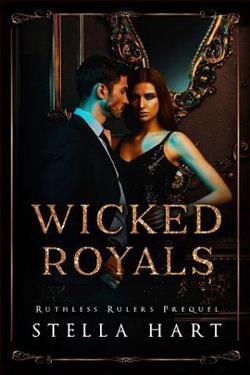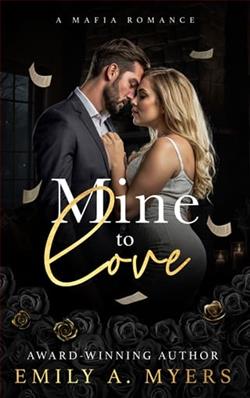Page 41 of Hang on St. Christopher
“I’d be interested in bidding in that auction.”
“Hold your horses, Archie. Getting ahead of yourself. Are you going to tell me what I want to know, or are you just a big faker like everyone else? Do you actually know what these are?”
Archie bristled, and his voice assumed an odd hectoring Anglo-Irish schoolmaster-y cadence: “During his seven decades of printmaking, Picasso created five major sets of etchings. Fifteen works in The Saltimbanques Suite of 1904–1905, one hundred works in the Vollard Suite of 1930–1937, sixty works in Series 60 of 1966–1968, three hundred forty-seven works in the 347 Series of 1968, and, finally, his hundred and fifty-six works in the 156 Series of 1969–1971. These suites alone total nearly seven hundred individual images.”
“Christ, you have all that in your noggin?” I asked, impressed.
“I checked while I was making your tea earlier.”
“So what are these particular etchings from?”
“Le Repos du Sculpteur. Vollard Suite B 162. Signed. They’re actually aquatints rather than true etchings, I believe.”
“What is that?”
“A metal plate is covered with an acid-resistant ground, usually varnish, through which the image is drawn with a pointed tool, exposing the metal below. The plate is then immersed in a bath of acid that bites away the metal where it was exposed by the drawn areas that were no longer protected by the ground. After the plate has been “etched” and cleaned, it is ready to be inked and printed—or reworked by the artist.”
“So how much?—”
“I’m not done,” Archie said, warming to his theme. “In the aquatint method, Picasso would draw directly on the metal plate with a black watery ink thickened by the addition of dissolved sugar and gum arabic. The drawing was then covered with an acid-resistant varnish or etching ground and immersed in warm water. This dissolves the drawing material. The plate is lightly rubbed, leaving the bare plate. The protecting varnish will still stick to the plate where the plate has not previously been treated with the ink-and-sugar mixture. A lovely process, which is why he made hundreds of the bastards.”
“Hundreds? So not worth very much?”
“Oh, no, quite the reverse. These have become very collectible in the last two decades since Picasso’s death.”
“How much?”
“Ten grand the pair.”
“Ten grand! You’re joking.”
“Not at all.”
“But from what you’re saying, it’s just a print basically.”
“A signed print from a very collectible series. Signed by Picasso.”
“Wow. Ten grand?”
“At the right auction, yes.”
“What do you think of the rest of the art in here?”
“Completely worthless. Some big reproductions and the, ahem, artist’s own stuff.”
“How could a hobbyist portrait painter acquire something like this?”
“He must have an independent source of wealth. Don’t like to speak ill of the dead, but this guy was a complete hack.”
“Are there good auction records for the Vollard Suite etchings?”
“Yes, there are. There have to be. With so many Picasso etchings floating around, the possibility of fakes has always been there. Dealers and buyers insist on a watertight provenance.”
“So could you find out for me who bought these two particular—what was that word?”
“Aquatints.”
“You could find out who bought these aquatints and when?”















